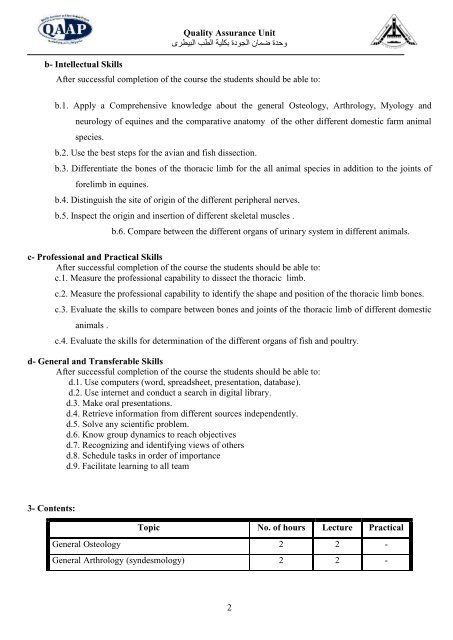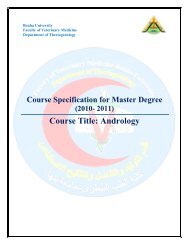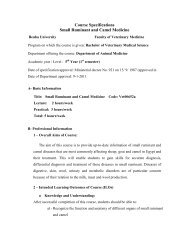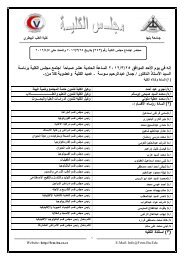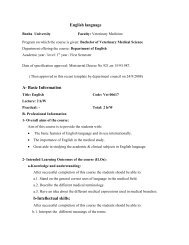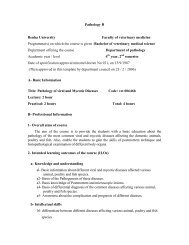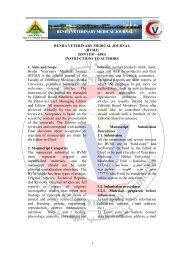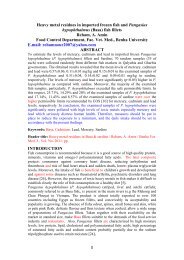Course Specifications Anatomy and Embryology (First A) A- Basic ...
Course Specifications Anatomy and Embryology (First A) A- Basic ...
Course Specifications Anatomy and Embryology (First A) A- Basic ...
Create successful ePaper yourself
Turn your PDF publications into a flip-book with our unique Google optimized e-Paper software.
- Intellectual Skills<br />
Quality Assurance Unit<br />
وحدة ضمان الجودة بكليت الطب البيطرى<br />
After successful completion of the course the students should be able to:<br />
b.1. Apply a Comprehensive knowledge about the general Osteology, Arthrology, Myology <strong>and</strong><br />
neurology of equines <strong>and</strong> the comparative anatomy of the other different domestic farm animal<br />
species.<br />
b.2. Use the best steps for the avian <strong>and</strong> fish dissection.<br />
b.3. Differentiate the bones of the thoracic limb for the all animal species in addition to the joints of<br />
forelimb in equines.<br />
b.4. Distinguish the site of origin of the different peripheral nerves.<br />
b.5. Inspect the origin <strong>and</strong> insertion of different skeletal muscles .<br />
b.6. Compare between the different organs of urinary system in different animals.<br />
c- Professional <strong>and</strong> Practical Skills<br />
After successful completion of the course the students should be able to:<br />
c.1. Measure the professional capability to dissect the thoracic limb.<br />
c.2. Measure the professional capability to identify the shape <strong>and</strong> position of the thoracic limb bones.<br />
c.3. Evaluate the skills to compare between bones <strong>and</strong> joints of the thoracic limb of different domestic<br />
animals .<br />
c.4. Evaluate the skills for determination of the different organs of fish <strong>and</strong> poultry.<br />
d- General <strong>and</strong> Transferable Skills<br />
After successful completion of the course the students should be able to:<br />
d.1. Use computers (word, spreadsheet, presentation, database).<br />
d.2. Use internet <strong>and</strong> conduct a search in digital library.<br />
d.3. Make oral presentations.<br />
d.4. Retrieve information from different sources independently.<br />
d.5. Solve any scientific problem.<br />
d.6. Know group dynamics to reach objectives<br />
d.7. Recognizing <strong>and</strong> identifying views of others<br />
d.8. Schedule tasks in order of importance<br />
d.9. Facilitate learning to all team<br />
3- Contents:<br />
Topic No. of hours Lecture Practical<br />
General Osteology 2 2 -<br />
General Arthrology (syndesmology) 2 2 -<br />
2


